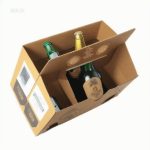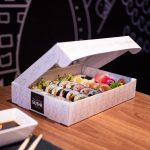In an era where packaging often feels either overly utilitarian or excessively wasteful, a quiet revolution is taking place. The windowed paper bag, a seemingly simple innovation, is redefining how we package, present, and perceive everyday products. Combining the rustic charm of paper with the practical transparency of a window, this packaging solution bridges the gap between environmental responsibility and consumer convenience in ways that continue to surprise manufacturers and shoppers alike.
The environmental advantages begin with the bag’s primary material. Unlike plastic alternatives that linger in landfills for centuries, paper bags come from renewable resources and decompose naturally. Modern windowed paper bags often feature responsibly sourced paper from managed forests, with many manufacturers incorporating recycled content. The window itself, typically made from plant-based cellulose or compostable bioplastics, maintains the bag’s overall eco-friendly profile. This thoughtful material selection means that after serving its purpose, the packaging can return to the earth without leaving a permanent mark.
Beyond sustainability, the psychological impact of the windowed design cannot be overstated. There’s an inherent trust that develops when consumers can see exactly what they’re purchasing. Whether it’s freshly baked croissants at a local bakery, artisanal coffee beans at a specialty roaster, or handmade crafts at a boutique, the window creates an immediate connection between product and buyer. This transparency builds brand credibility while reducing the need for excessive external branding that can feel intrusive or wasteful.
The versatility of windowed paper bags spans countless industries. Bakeries were among the first to recognize their value, using them to showcase flaky pastries and crusty breads while keeping them fresh. The fashion industry has embraced them for accessory packaging, allowing the quality of scarves or jewelry to speak for itself. Gourmet food purveyors use them for everything from specialty teas to handmade chocolates. Even non-food items like potpourri, craft supplies, and holiday decorations benefit from the combination of rustic appeal and product visibility.
From a retail perspective, windowed paper bags offer practical advantages that extend beyond aesthetics. Their structure provides better protection for fragile items compared to fully transparent packaging, while the paper component absorbs minor impacts that might otherwise damage products. The window size and placement can be customized to highlight specific product features, creating a framed presentation that enhances perceived value. Additionally, the paper surface offers ample space for branding, ingredient lists, or storytelling that complements rather than competes with the product itself.
Consumer response to windowed paper bags has been overwhelmingly positive. Shoppers appreciate the tactile experience—the sturdy handle, the crisp paper texture, the satisfying crinkle. They enjoy the unboxing experience that feels both premium and environmentally conscious. Retailers report that products packaged in windowed paper bags often command higher perceived value, allowing for slight price premiums that customers willingly pay for the combined experience of sustainability, transparency, and quality.
As we move toward a more circular economy, the windowed paper bag represents a perfect case study in balanced design. It acknowledges that while sustainability is crucial, practicality cannot be sacrificed. It demonstrates that transparency builds consumer trust in ways that slogans and certifications alone cannot achieve. Most importantly, it proves that the most effective solutions are often those that seamlessly blend traditional materials with intelligent innovation.
The next time you receive a product in a windowed paper bag, take a moment to appreciate the thoughtful design choices. Notice how the paper feels in your hand, how the window frames the product, how the entire package tells a story about the brand’s values. In that simple combination of paper and transparency, you’re holding more than just a container—you’re holding a vision of what thoughtful, responsible packaging can be.




Leave a Message